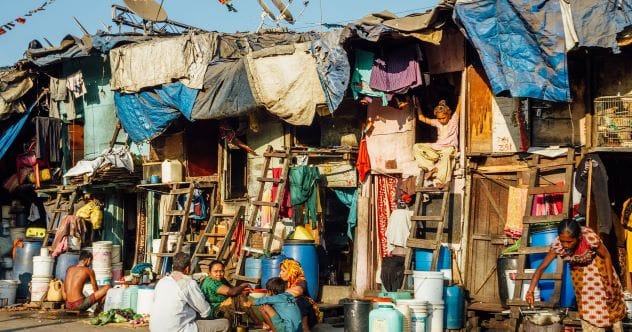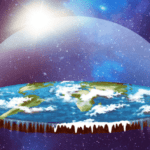Many of us dream of getting away, seeing new sights, or returning to beloved spots. Travel, whether for relaxation, adventure, or cultural immersion, truly enriches our lives. But there’s another kind of travel, one that draws people to places touched by conflict, disaster, or death. This is dark tourism, a practice with a long history that continues to fascinate and provoke debate today.
It’s a journey into the shadowy parts of human history and experience, raising questions about our motivations and the impact of our curiosity. Let’s explore some unsettling and thought-provoking facts about this complex phenomenon.
10. It’s Been Going On for Over a Hundred Years (at Least!)
You might think dark tourism is a modern trend, but it’s actually been around for more than a century. Mark and Tracey Norman, in their book Dark Folklore, note that wealthy individuals in the late 1800s would take trips to areas like Whitechapel in London, the scene of the Jack the Ripper murders. Their aim was often to observe how people lived in poverty. Similar tours occurred in parts of New York City during the same period.
This long history shows that a fascination with darker destinations isn’t new. As we’ll see, various types of dark tourism cater to different interests. No matter the specific site or reason, there has long been a desire, especially among some affluent groups, to visit places associated with gloom and misfortune.
9. Locations Of Battles and War
Some of the earliest forms of war tourism date back to the 1860s. During the American Civil War, affluent citizens would purchase tickets to have picnics while watching battles from a safe distance. Interestingly, some of these individuals even bought the land where battles took place, planning to sell tours of the sites after the war ended – and many did.
Even earlier instances exist. Mark and Tracey Norman found that in 1815, people of noble status paid handsomely to dine while observing the Battle of Waterloo. Perhaps more surprisingly from our modern viewpoint, the travel company Thomas Cook offered tours to the battlefields of the Second Boer War. Around the same time, they also arranged bus trips to public hangings.
8. A Discreet Tour of the Slums
What we now call “slum tourism” also has historical roots, with examples from the late 1800s and early 1900s. It gained renewed, albeit underground, popularity in the 1990s and 2000s. Many travelers visited poverty-stricken areas in countries like Brazil, India, and South Africa.
Ironically, South African slum tours originated from an official program designed to show white Africans the living conditions of the black population. As the 1990s progressed, international tourists joined these tours. While initially for educational purposes, an uncomfortable element began to emerge, with some visitors seemingly touring these areas purely for spectacle. Today, many cities worldwide with significant impoverished areas experience this type of tourism, highlighting a persistent, if controversial, interest.
7. Fascination with Scenes of Disasters
Another distinct niche within dark tourism is the desire to visit sites recently struck by disaster. Tours of Pripyat, near the Chernobyl nuclear plant, decades after the catastrophe, are a well-known example, and they are perfectly legal. Similarly, after Hurricane Katrina hit New Orleans in 2005, numerous companies offered tours of the flood-ravaged areas.
These particular tours faced criticism, not only on moral grounds but also because some claimed they obstructed recovery efforts. The reality is that wherever disaster strikes—be it natural, like floods and wildfires, or man-made, like the Exxon Valdez oil spill—some people are willing to pay to witness the devastation firsthand. With such events occurring regularly, these destinations are likely to remain a part of the dark tourism landscape.
6. People Do It Without Realizing It
It’s arguable that many people participate in dark tourism without even knowing it. Consider the millions who visit Auschwitz in Poland or the Anne Frank House in Amsterdam. Both are sites of immense horror and suffering. While these visits are profoundly important for education, they are also, by definition, forms of dark tourism.
Other examples include trips to locations in the former Soviet Union, especially those linked to the Cold War, like abandoned military bases. Some even classify visits to Venice, Italy, as “doom tourism” because the city is famously sinking and will one day be lost to the sea. Often, these trips have an educational component, suggesting that some good can come from visiting these darker sites.
5. The Golan Heights Tourists
One of the starkest examples of contemporary dark tourism involves organized trips to the Golan Heights, on the Israeli-Syrian border. Tourists arrive equipped with binoculars and cameras, eager to catch a glimpse of smoke or even active conflict. This practice mirrors the battlefield picnics of the American Civil War.
Kobi Marom, a retired Israel Defense Forces colonel, is one of those who guides these tours. He described to The Atlantic in 2014 how these tourists “gaze down on Syria’s bloodletting.” He recounted an incident where rebels captured a United Nations checkpoint, and many observers eagerly watched the event unfold from the safety of the buffer zone. The Golan Heights is a clear, modern-day example of humans’ draw to witnessing conflict up close.
4. It’s Still Happening Today–In Many Ways!
As we’ve seen, dark tourism is very much alive and well in the twenty-first century. Beyond the established examples, the range of grim locations attracting visitors seems to be ever-expanding. For instance, many people travel to see sites associated with cults or visit buildings where serial killers lived and committed their crimes.
Even abandoned medical facilities, sometimes still containing old medical jars with preserved remains, draw a certain crowd. In essence, if a place has a dark or macabre history, it’s likely that some people will want to see it up close. For those willing to arrange such tours, it remains a potentially profitable venture.
3. A Future of Many Dark Locations Available
Considering the previous point, the future of dark tourism may appear rather bleak, and perhaps it is. With tragedies and disasters unfolding across the globe at any given moment, there’s unfortunately no shortage of potential new sites. Might we see increased tourist trips to places like Afghanistan in the future, or to Ukraine once the current conflict subsides? It’s quite possible.
Sites of genocide, mass murder, major conflicts, and both natural and man-made disasters are numerous. These are all locations that some individuals might wish to experience firsthand. As technology continues to make the world feel smaller, the ways these somber vacations can be organized and delivered will likely also grow and diversify.
2. A Bizarre Need For It?
Could it be that dark tourism serves a purpose, or that there’s even a strange sort of need for people to visit these locations? The examples of Auschwitz and the Anne Frank House are compelling in this regard. Most would agree that the horrors of World War II, especially the Holocaust, must never be forgotten. Seeing such places firsthand can play a significant role in this remembrance and education.
Many other sites around the world could also serve an educational purpose. For example, visiting areas that have suffered environmental disasters might powerfully illustrate the potential consequences of our collective actions. Trips to places like the Chernobyl plant and its surrounding exclusion zone could offer similar sobering lessons, fostering awareness and reflection.
1. Virtual Dark Tourism
In our modern, digitally connected age, it’s perhaps unsurprising that one could engage in dark tourism without ever leaving home. Virtual tourism in this sphere is likely to grow. In 2017, Facebook founder Mark Zuckerberg, whether intentionally or not, highlighted this possibility with a virtual tour of flood-stricken Puerto Rico. This live-streamed event drew considerable criticism, largely due to a perceived lack of empathy from Zuckerberg.
However, an argument can be made that such virtual tours of tragedy-hit areas could be used for good. They might offer a way to raise funds by allowing people to see the extent of distress for themselves. Furthermore, they could also serve as an educational tool, providing insights from afar. Whether we’ll see widespread offerings of such virtual dark tours anytime soon, though, is yet to be determined.
Dark tourism is a multifaceted phenomenon, blending curiosity, remembrance, education, and sometimes, a more unsettling voyeurism. It challenges us to think about why we’re drawn to these places and the impact of our visits.
What are your thoughts on dark tourism? Is it a valuable way to learn and remember, or does it cross an ethical line? Share your views in the comments below!










